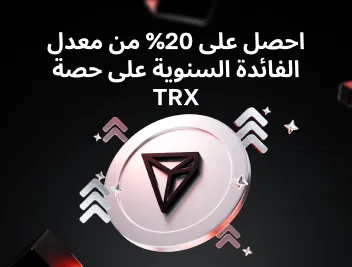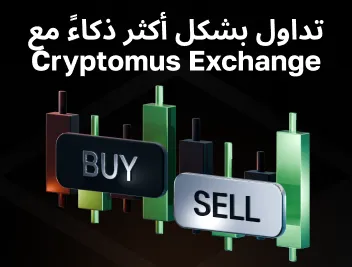
زلم مقابل زرب: تحليل متعمق ل ستيلر و ريبل في الساحة التشفير
العديد من عشاق التشفير يسألون أنفسهم: يجب أن أشتري زرب و زلم? اليوم نحن نذهب لتحديد وجهات نظر كل عملة.
في عالم العملات المشفرة المكهرب ، المنافسة ليست مجرد لعبة ؛ إنه تطور. بين الأداء ممتاز ، والمنافسة كما زلم مقابل زرب في كثير من الأحيان أصداء بصوت أعلى: ستيلر (زلم) و ريبل (زرب).
مثل المصارعين في الكولوسيوم الرقمي ، فإن هاتين العمليتين التجريبيتين لا تقاتلان فقط من أجل تفوق القيمة السوقية ، ولكن أيضا من أجل أسهم ومحافظ المستثمرين.
ما هو زلم و زرب
زلم: ستيلر لومينز ، الرمز الأصلي للشبكة ستيلر ، ليست مجرد عملة رقمية. إنها أداة ثورية تهدف إلى إضفاء الطابع الديمقراطي على الوصول المالي على مستوى العالم. ستيلر يمكن بسهولة التحقق من مصداقية المدققين دون الاعتماد على عمادا.
ريبل: شريان الحياة لشبكة ريبل ، يضع نفسه كطاغوت في المعاملات عبر الحدود ، وإعادة تعريف السرعة والكفاءة. فإنه يتيح لك تحويل الأموال بثمن بخس ودوليا.
زلم مقابل زرب: كيف تعمل?
 ما هو الفرق بين زلم و زرب? للعثور على الإجابة ، يجب أن تكون على دراية بآليات عملها.
ما هو الفرق بين زلم و زرب? للعثور على الإجابة ، يجب أن تكون على دراية بآليات عملها.
ستيلر إكس إل إم: الشبكة الديمقراطية
في صميم إكس إل إم ستيلر هي مهمة لإضفاء الطابع الديمقراطي على الوصول المالي. وهي تعمل على شبكة مفتوحة المصدر اللامركزية ، مما يعني أن أي شخص ، في أي مكان يمكن أن تشارك والابتكار على منصة ممتاز.
يتم تأكيد المعاملات على ستيلر باستخدام بروتوكول توافق الآراء ستيلر (سكب) ، وهي طريقة فريدة تضمن معالجة سريعة وآمنة للمعاملات. يعتمد هذا البروتوكول على شبكة من العقد الموثوقة ، والتي تعمل معا للاتفاق على صلاحية المعاملة ، مما يجعل العملية فعالة وشاملة.
ريبل إكس آر بي: القناة المؤسسية
ويستند ريبل ريبل على إجماع تراستلاين ، مما يجعلها المفضلة بين المؤسسات المالية. يستخدم زرب تقنية دفتر الأستاذ الموزعة ، ولكن على عكس ستيلر ، فإنه يعمل على شبكة من المدققين المحددة مسبقا.
يدعم هذا الهيكل عمليات التحقق السريعة والموثوقة للمعاملات ، وهو مثالي للاستخدام المؤسسي الكبير الحجم. الهدف الأساسي لريبل هو تبسيط التحويلات المالية الدولية ، مما يجعلها سريعة وسلسة مثل إرسال بريد إلكتروني.
زلم مقابل زرب: كشف النقاب عن 3 أوجه تشابه ملحوظة
1. المعاملات بسرعة البرق: قوة سرعة التشفير
واحدة من أوجه التشابه الأكثر مبهجة بين زلم و زرب هو سرعة المعاملات عنيفا. في عالم يكون فيه الوقت ذهبا رقميا ، تبرز كل من هذه العملات المشفرة كعدائين على المسار الصحيح.
تتم معالجة المعاملات بهذه السرعة التي تجعل الأنظمة المصرفية التقليدية تبدو وكأنها تعمل في حركة بطيئة. سواء كنت تقوم بتحويل الأموال في جميع أنحاء العالم أو إجراء دفعة سريعة ، زلم و زرب ضمان العملة الرقمية الخاصة بك يتحرك أسرع من نجم اطلاق النار.
2. رسوم ضوء الريش: وفر أكثر
في المخطط الكبير للعملات المشفرة ، يمكن أن تكون رسوم المعاملات بمثابة كسر للصفقات. هنا ، يظهر كل من زلم و زرب كفرسان في درع لامع ، وخفض الرسوم إلى جزء صغير من المائة. هذه السمة المشتركة تجعلها جذابة بشكل لا يصدق ، خاصة لأولئك الذين يتطلعون إلى إجراء معاملات متكررة أو كبيرة الحجم دون عبء الرسوم الباهظة.
إنه مثل الاستمتاع بخدمة متميزة بسعر اقتصادي-ستتنفس محفظتك بالتأكيد الصعداء!
3. صديقة للبيئة
في عصر حيث الوعي البيئي هو الهدف الأسمى ، زلم و زرب الوقوف متحدين في نهجها صديقة للبيئة. لقد أدارت كلتا العملات المشفرة ظهرها للعمليات المتعطشة للطاقة المرتبطة ببعض نظيراتها الرقمية.
من خلال تقليل بصمتهم الكربونية ، فهم ليسوا مجرد أصول رقمية ؛ إنهم محاربون أخضرون في عالم التشفير. الاستثمار في زلم أو زرب ليس مجرد قرار مالي ؛ انها إشارة إلى الاستدامة البيئية.
زلم مقابل زرب: الاختلاف التشفير الكبير-3 الاختلافات الرئيسية
فيما يلي نظرة على ثلاثة اختلافات رئيسية تميز هاتين العملتين الرقميتين ، حيث ترسم صورة لهويات فريدة في عالم غالبا ما يتم رسمه بفرشاة عريضة.
1. فلسفة المركزية مقابل اللامركزية: قصة إيديولوجيتين
في قلب النقاش زلم مقابل زرب هو السرد الكلاسيكي من اللامركزية مقابل المركزية. ستارز زلم هو حامل لواء لنهج لامركزي ، وتعزيز المشهد المالي مفتوح المصدر والديمقراطي. إنها ما يعادل العملة المشفرة لحركة شعبية ، تهدف إلى تمكين غير المتعاملين مع البنوك وغير المتعاملين مع البنوك.
من ناحية أخرى ، ريبل ريبل هو أشبه وول ستريت من التشفير مركزية ، مبسطة ، وصديقة للمؤسسات. إنها عملة رقمية ترتدي بدلة وربطة عنق ، جذابة للبنوك والمؤسسات المالية مع نظام المعاملات المنظم والفعال.
2. الجمهور المستهدف: بطل الشعب مقابل اختيار المصرفي
الغوص في الجماهير المستهدفة ، زلم و زرب لا يمكن أن يكون أكثر اختلافا. وتضع زلم نفسها كبطل الشعب ، مع التركيز على جعل الخدمات المالية في متناول الجميع ، وخاصة أولئك الذين ليس لديهم إمكانية الوصول إلى الخدمات المصرفية التقليدية.
على العكس من ذلك ، يستهدف ريبل الأبراج العالية للتمويل المصرفي والمؤسسي ، وتبسيط المعاملات عبر الحدود. إنه الدبلوماسي المالي ، الذي يخفف من تعقيدات التحويلات المالية الدولية.
3. التصميم المعماري: المصدر المفتوح مقابل النظام المغلق
من حيث الهندسة المعمارية التكنولوجية ، زلم و زرب على طرفي نقيض من الطيف. يزدهر إكس إل إم من ستيلر على منصة مفتوحة المصدر ، مما يشجع المطورين ورجال الأعمال على البناء والابتكار على شبكتها. انها مثل رمل الرقمية ، مفتوحة للجميع للعب وخلق. في المقابل ، تعمل ريبل ريبل على شبكة أكثر انغلاقا وامتلاكا.
زلم مقابل زرب: لغز الاستثمار
وهو أفضل استثمار? إنه مثل الاختيار بين كاتانا وسيف عريض – كلاهما قوي ، لكن اختيارك يعتمد على أسلوب معركتك. هل تقدر اللامركزية والشمول المالي الأوسع (زلم), أم أنك تنجذب إلى جاذبية التبني المؤسسي والمعاملات المبسطة (زرب)?
الخلاصة
الآن لديك مراجعة زلم مقابل زرب. لقد تعلمنا أن هذه العملات ليست مجرد عملات ؛ إنها رؤى للمستقبل. كما أنها تتطور والتكيف في هذه الساحة المصارع الرقمية ، وينبغي أن يسترشد قراركم للاستثمار في واحد أو آخر من إيمانكم في الفلسفات الكامنة والمستقبل الذي وعد لتشكيل.
قيم المقال








تعليقات
0
يجب أن تكون مسجلا للدخول لتكتب تعليق